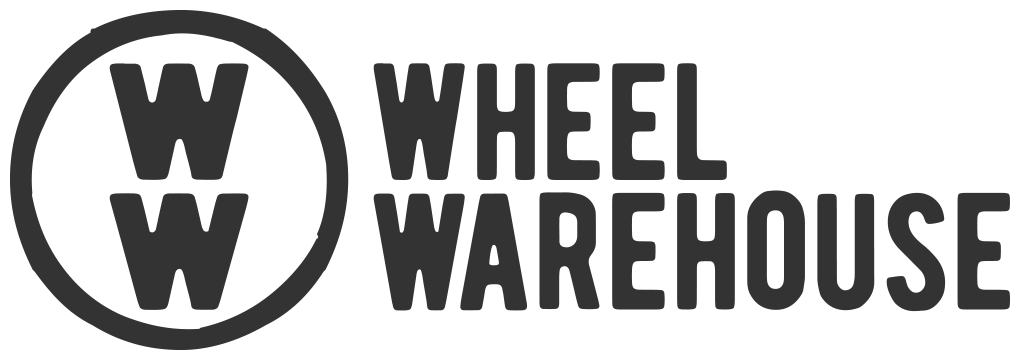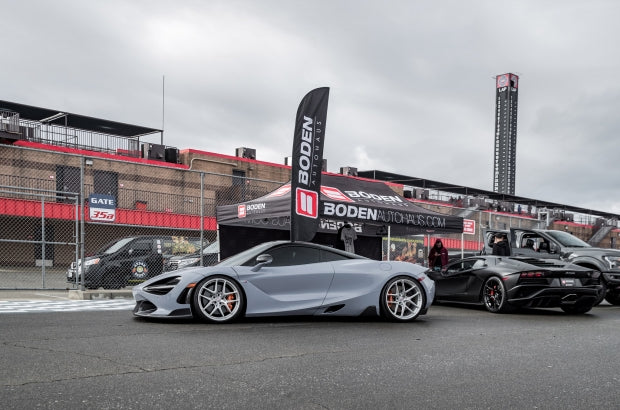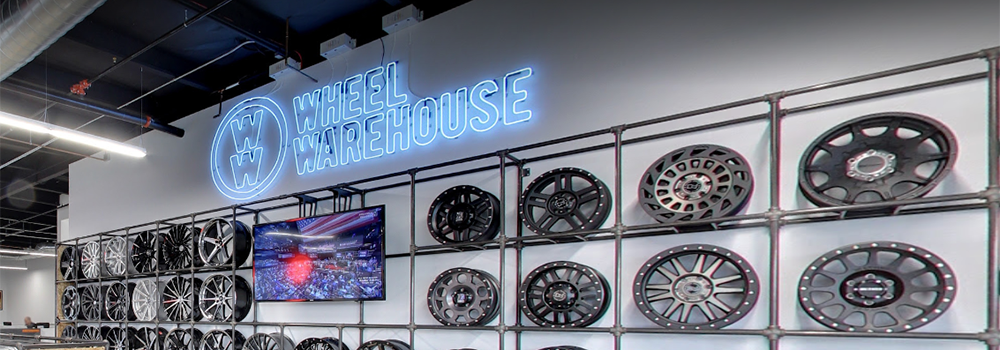How to Select the Best Wheels for Your Car, Truck, or SUV (Fitment, Offset, Load, and More)
TL;DR: Match your bolt pattern and hub bore, keep outer tire diameter within ±3% of stock, choose offset that preserves clearance and scrub radius, verify load rating (at least your axle GAWR ÷ 2 per wheel), and confirm brake clearance. Then pick construction (cast/flow-formed/forged), finish, and size for your use case (daily, off-road, track, towing). Don’t forget lug hardware and TPMS.
Quick Fitment Checklist
- Bolt pattern matches your vehicle (e.g., 5×114.3).
- Center bore is hub-centric (wheel bore ≥ hub; use hub-centric rings if larger).
- Offset (ET) stays within ~±5–10 mm of stock unless you’ve confirmed clearance.
- Backspacing keeps inner barrel off struts, spring perches, and sway bars.
- Brake clearance verified (spoke design + barrel depth) — if unsure, ask us to confirm.
- Wheel load rating ≥ your heavier axle GAWR ÷ 2 (per wheel) with 10% margin.
- Outer tire diameter stays within ±3% of OEM to protect gearing & speedometer.
- Lug seat type matches (cone vs ball vs mag) with correct lug nuts/bolts, thread pitch & torque.
- TPMS compatibility understood.
- Use-case fit (daily ride, off-road clearance, track weight, towing capacity).
Pro tip: If two sizes both fit, the lighter wheel (lower unsprung mass) usually rides, handles, and stops better.
Wheel Fitment Basics
Width (e.g., 8.5") is measured bead-to-bead; overall rim width is ~1" wider including flanges.
Diameter (e.g., 18") must clear brakes and match a tire that keeps overall OD near stock.
Bolt pattern: number of lugs × circle diameter (e.g., 6×139.7). Explore custom wheels.
Center bore: the wheel’s hub hole. If it’s larger than your hub, add hub-centric rings.
Offset (ET): mm from the wheel’s centerline to the mounting face. Positive ET tucks inward; negative ET pushes outward.
Backspacing (inches) ≈ [(wheel width + 1) ÷ 2] + (offset in mm ÷ 25.4)
Offset, Backspacing & Scrub Radius
- Too much positive offset: inner wheel/tire may rub the strut/spring at full lock or over bumps.
- Too much negative offset: outer lip can contact fenders; steering feel may worsen.
- Scrub radius changes with offset and tire width; large changes can affect stability and steering kick-back.
Goal: keep effective offset near stock unless you’re widening with known clearance.
Rule of thumb: When increasing width by 1" (25.4 mm), moving offset ~6 mm toward positive keeps the inner/outer positions similar. Always verify actual clearances.
Need more inner or outer clearance? Consider properly sized wheel spacers & adapters and contact us for guidance.
Diameter & Width: Plus-Sizing the Smart Way
- Keep overall tire diameter within ±3% of OEM.
- Larger diameter reduces sidewall for crisper turn-in but can increase harshness and curb-rash risk.
- Wider wheels/tires improve grip but may tramline and reduce snow performance.
Quick example: Stock tire OD = 27.0". A new combo between 26.2" and 27.8" stays within the 3% guideline.
Load Ratings: Safety for Cars, Trucks & SUVs
- Each wheel’s load rating must meet or exceed the heavier axle’s GAWR ÷ 2.
- For towing/overlanding, add extra margin; select wheels and tires with LT (Light Truck) ratings when appropriate.
- Never down-rate from OEM capacity.
Brake, Hub & Lug Details
- Brake clearance is a combo of barrel diameter and spoke design; big-brake kits often need template checks.
- Hub-centric rings (plastic or aluminum) remove vibration if the bore is larger than the hub.
- Lug seat type must match: conical (most aftermarket), ball (many European OEM), mag/flat (some trucks).
- Thread pitch and lug length must be correct; torque to vehicle spec and re-torque after 50–100 miles.
- TPMS: transfer OEM sensors or use compatible aftermarket sensors; a relearn procedure may be required.
Use-Case Picks (Daily, Off-Road, Track, Towing)
Daily Driver / All-Season
- Size: +0 to +1 diameter, modest width increase.
- Offset: near OEM.
- Priorities: ride, durability, corrosion resistance.
- Construction: quality cast or flow-formed.
Off-Road / Overlanding
- Size: smaller diameter, taller sidewall for compliance and protection.
- Offset: slightly lower (more poke) only if needed for upright/UCA clearance; watch fenders.
- Consider: true beadlock (check legality) or beadlock-look for aired-down traction.
- Load: high; pair with LT-rated tires.
Track / Autocross
- Choose lighter wheels; consider a square setup to rotate tires.
- Construction: flow-formed or forged for strength-to-weight.
- Offset: tune for strut clearance and fender with your camber settings.
Towing / Heavy Duty
- Prioritize load rating and heat management.
- Verify hub bore on trucks (many are hub-centric).
- Avoid extreme low-profile tires; favor robust finishes that resist dust/salt.
Materials & Construction
- Gravity-cast: budget-friendly, heavier.
- Low-pressure cast: stronger than gravity cast; common OEM quality.
- Flow-formed/rotary-forged: lighter barrel, excellent value/strength.
- Fully forged (monoblock): lightest & strongest, premium cost.
- Multi-piece (2/3-pc): customizable widths/offsets; inspect hardware periodically.
Finishes & Corrosion Resistance
- Powder coat is durable; clear-coated machined faces look sharp but need care.
- Winter use: prefer painted/powder-coated over polished bare aluminum; rinse road salt often.
- Dark finishes hide dust; silver hides rash better; matte can spot-clean poorly.
Budget & Warranty Tips
- Prioritize certifications (e.g., JWL/VIA/TÜV where applicable).
- Compare weight and load rating at the same size.
- Review finish warranty terms (winter/salt exclusions are common).
- Buy from sellers that provide fitment guarantees and clear return policies.
Step-by-Step: How to Measure for Wheels
- Grab your OEM specs: wheel size, offset, bolt pattern, center bore, tire size (door-jamb placard/owner’s manual).
- Map clearances: check inner (strut/spring, upright, brake hoses) and outer (fender lip, liners) at full lock and full compression.
- Pick target width/diameter based on use case; shortlist offsets that keep inner/outer positions safe.
- Calculate backspacing to ensure inner barrel clearance.
- Confirm brake template (ask the wheel maker or use a printable template).
- Validate load rating against your GAWRs (front/rear).
- Choose finish & hardware: correct lug seat, thread pitch, hub rings, center caps, and TPMS plan.
- Mount & torque correctly; re-torque after 50–100 miles.
FAQs
- Can I put bigger wheels on my car or SUV?
- Yes—if you keep overall tire diameter within ±3% of stock and preserve offset so nothing rubs. Expect a firmer ride with larger diameters and shorter sidewalls.
- What offset do I need?
- Start with OEM offset and adjust within ~±5–10 mm as width changes. Verify inner/outer clearances physically or with a fitment calculator/template.
- What’s backspacing vs. offset?
- Offset is in mm from centerline; backspacing is inches from mounting face to inner rim edge.
- Do I need hub-centric rings?
- Only if the wheel bore is larger than your hub. Hub-centric rings help center the wheel and reduce vibration.
- Forged vs. flow-formed—what should I choose?
- Flow-formed offers a great strength-to-weight value for street/track. Forged is strongest/lightest but pricier—ideal for performance or heavy-duty needs.
- Will 20" ride worse than 18"?
- Usually yes, because the sidewall is shorter. You’ll feel more road texture and impacts.
- Best wheel finish for winter?
- Painted/powder-coated with a strong clear coat. Avoid bare polished finishes in salted climates.
- Do I need new lug nuts/bolts?
- Possibly. Seat type and thread pitch must match. Many aftermarket wheels use conical seats and may require thin-wall sockets. See lug nuts and wheel bolts.
























Leave a comment
This site is protected by hCaptcha and the hCaptcha Privacy Policy and Terms of Service apply.